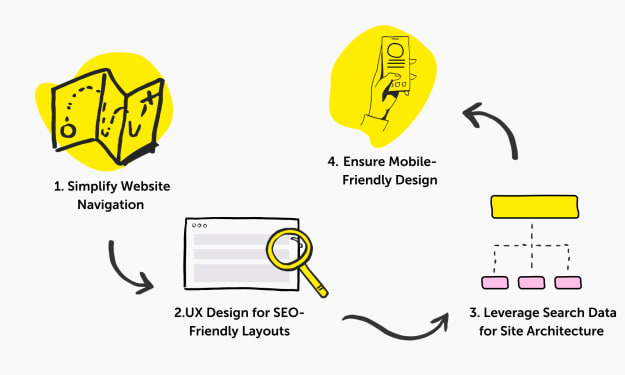Disability Myths Debunked: Busting common misconceptions and stereotypes about disabilities through informative and engaging storytelling.
Find out what is true and what is folklore.

Disability Myths Debunked: Busting Misconceptions and Stereotypes through Engaging Storytelling
There's a lot of talk about disabilities, but how much of it is true? Often, people's perceptions are shaped by myths and stereotypes, rather than facts. This post aims to change that. We're going to debunk some common disability myths. We'll tackle these misconceptions head-on and shed some light on the truth. Using engaging storytelling, we'll provide informative insights to help you better understand disabilities. Let's get started and bust these myths wide open.
The Importance of Debunking Disability Myths
Disability myths and misconceptions have long been ingrained in society, perpetuating stereotypes and hindering the inclusion and acceptance of disabled individuals. It is crucial to challenge and debunk these myths through informative and engaging storytelling. By doing so, we can foster a more inclusive society that celebrates diversity and empowers disabled individuals to thrive. In this section, we will explore the impact of stereotypes on disabled individuals and the power of storytelling in challenging misconceptions.
Understanding the Impact of Stereotypes on Disabled Individuals
Stereotypes play a significant role in shaping public opinion and attitudes towards disabled individuals. These misconceptions can lead to discrimination, prejudice, and exclusion, further marginalizing disabled individuals in various aspects of life, including education, employment, and social interactions.
For instance, the stereotype that disabled individuals are helpless or incapable often leads to the underestimation of their abilities and potential. This can result in limited opportunities and lower expectations placed upon them. By debunking these myths, we can shift the narrative and highlight the unique strengths and talents that disabled individuals possess, challenging society's limited perception of their capabilities.
The Power of Storytelling in Challenging Misconceptions
Storytelling has always been a powerful tool for conveying messages and evoking emotions. When it comes to debunking disability myths, storytelling becomes an invaluable resource in reshaping public perception and breaking down barriers.
By sharing personal stories of disabled individuals, we can humanize their experiences and provide a genuine insight into their lives. These stories can challenge preconceived notions and create empathy, helping people realize the diversity and resilience within the disabled community.
Moreover, storytelling allows us to showcase disabled individuals' achievements, contributions, and everyday experiences. It highlights their strengths, talents, and determination, dispelling the notion that disability equates to helplessness or incapacity.
Through effective storytelling, we can encourage empathy, understanding, and acceptance, fostering a more inclusive society where disabled individuals are valued for their unique perspectives and abilities.
In conclusion, debunking disability myths is of utmost importance in creating a more inclusive and accepting society. By understanding the impact of stereotypes on disabled individuals and harnessing the power of storytelling, we can challenge misconceptions, break down barriers, and pave the way for a more inclusive future for all.
Disability Myths Debunked
Myth #1: Debunking the Stereotype
When it comes to disabilities, there are numerous myths and misconceptions that persist in society. These false beliefs can lead to a lack of understanding and empathy towards individuals with disabilities. In this section, we will debunk the first common stereotype surrounding disabilities.
1. Disabilities Limit Abilities: Busting the Myth
One of the most prevalent misconceptions about disabilities is that they inherently limit a person's abilities. This stereotype fails to recognize the diverse talents, skills, and capabilities possessed by individuals with disabilities. It is essential to understand that disabilities do not define a person's worth or potential.
Consider this: just like anyone else, people with disabilities have unique strengths and weaknesses. While they may face certain challenges, they have the ability to overcome them and excel in various areas. By challenging this myth, we can shift our perspective and foster a more inclusive society.
2. Personal Stories: Breaking the Barrier
To truly debunk the stereotype, let's delve into some personal stories that exemplify how individuals with disabilities have defied societal expectations and achieved remarkable success.
Story 1: The Unstoppable Athlete
Meet Sarah, a Paralympic athlete who was born with a physical disability. Despite her condition, Sarah developed a passion for sports at a young age. With determination and hard work, she went on to become a world-class wheelchair racer, winning multiple medals in international competitions. Sarah's story is a testament to the fact that disabilities do not limit a person's ability to achieve greatness in their chosen field.
Story 2: The Creative Entrepreneur
John, a talented artist, was diagnosed with autism in his early childhood. Despite the challenges he faced in social interactions, John discovered his passion for painting. Through his unique perspective and artistic expression, he has gained recognition in the art world, selling his artwork and inspiring others with his creativity. John's story showcases how individuals with disabilities can excel in creative endeavors, proving that disabilities should not be seen as limitations.
These personal stories challenge the stereotype that disabilities limit abilities. They highlight the resilience, determination, and talents of individuals who have overcome societal barriers and achieved remarkable accomplishments. By sharing these stories, we can change the narrative surrounding disabilities and foster a more inclusive and accepting society.
Stay tuned for more myth debunking and inspiring stories in the upcoming sections!
Disability Myths Debunked: Myth #2
In a world filled with diverse individuals, it is unfortunate that myths and stereotypes about disabilities still persist. These misconceptions often lead to misunderstandings and discrimination, hindering the progress towards an inclusive society. In this section, we will debunk Myth #2 and shed light on the truth behind the stereotype. Through personal stories and engaging storytelling, we aim to challenge these misconceptions head-on.
Breaking the Stereotype
Myth #2: People with disabilities are dependent and helpless.
It is a common misconception that individuals with disabilities are entirely dependent on others and incapable of leading independent lives. This stereotype fails to recognize the diverse abilities and strengths possessed by people with disabilities. In reality, many individuals with disabilities are highly capable, self-sufficient, and actively contribute to their communities.
People with disabilities have unique skills and talents that can be utilized in various fields and industries. They are doctors, lawyers, entrepreneurs, artists, athletes, and educators, among many other professions. By breaking free from the chains of this stereotype, we can appreciate and celebrate the immense potential that individuals with disabilities bring to society.
Personal Stories
To further understand the truth behind Myth #2, let's delve into the personal stories of individuals who have defied the stereotype and achieved remarkable feats.
Sara's Triumph Over Adversity
Sara, a young woman with a physical disability, has always dreamed of pursuing a career in dance. Despite facing numerous challenges, including limited mobility, she refused to let her disability define her. With determination and unwavering passion, Sara worked tirelessly to perfect her craft.
Today, Sara is an accomplished professional dancer, captivating audiences with her grace and skill. Her story serves as a powerful testament to the fact that disabilities do not hinder one's ability to pursue their dreams and make a meaningful impact in their chosen field.
John's Entrepreneurial Journey
John, a wheelchair user, had a vision to start his own business. Despite encountering skepticism and doubt from others, he remained undeterred. John utilized his entrepreneurial spirit, resourcefulness, and innovative thinking to establish a successful online venture.
Through his business, John not only achieved financial independence but also created employment opportunities for others. His story highlights the fact that individuals with disabilities possess the drive and determination to excel in the business world, challenging the notion of dependence.
Emma's Advocacy for Inclusion
Emma, a disability rights activist, has dedicated her life to advocating for inclusivity and equal opportunities for individuals with disabilities. Through her powerful storytelling and influential advocacy work, Emma has shattered the stereotype of helplessness and successfully brought about positive change in her community.
Emma's story serves as a reminder that people with disabilities are not passive recipients of care but active agents of change who can drive societal progress.
By sharing these personal stories, we hope to inspire others and dispel the myth that people with disabilities are helpless. These remarkable individuals have overcome obstacles, defied societal expectations, and contributed significantly to their respective fields. It is crucial to recognize and celebrate their achievements as we work towards a more inclusive and accepting society.
Stay tuned for the next section where we will debunk another common disability myth and present empowering narratives that challenge these misconceptions head-on. Together, let's break down barriers and foster a world that embraces and supports the diverse abilities of all individuals.
Myth #3: All Disabilities Are Visible
Dispelling the Stereotype
It is a common misconception that all disabilities are visible. However, this is far from the truth. In reality, many disabilities are invisible, meaning that they are not immediately apparent to others. This misconception can lead to misunderstandings and discrimination against individuals with invisible disabilities. By debunking this stereotype, we can create a more inclusive and understanding society.
Personal Stories
1. Story of Sarah: Living with Chronic Pain
Sarah is a young woman who suffers from chronic pain, a condition that is not visible to the naked eye. Despite her constant pain, she often faces skepticism and disbelief from others who cannot comprehend her condition. Sarah's daily struggles are not apparent on the surface, but they are very real and affect her quality of life. Through her story, we can understand that disabilities can be hidden, but they still have a significant impact on individuals' lives.
2. John's Journey with ADHD
John is a successful businessman who was diagnosed with Attention Deficit Hyperactivity Disorder (ADHD) in his childhood. Throughout his life, he has had to deal with the challenges of managing his condition. However, because ADHD is an invisible disability, many people fail to recognize the difficulties he faces. By sharing his experiences, John hopes to shed light on the fact that disabilities come in many forms, not just those that are immediately visible.
Conclusion
By dispelling the myth that all disabilities are visible, we can foster a more inclusive and empathetic society. Personal stories like those of Sarah and John help us understand that disabilities can be hidden, but they are no less valid or deserving of support. It is important to remember that not all disabilities are visible, and by being more informed and compassionate, we can break down barriers and promote inclusivity for all.
Myth #4: Disability Does Not Define a Person
Demystifying the Stereotype
Many people hold the misconception that a disability defines a person's entire identity. This myth assumes that individuals with disabilities are solely defined by their limitations and challenges, discounting their diverse personalities, talents, and aspirations. However, this stereotype fails to recognize the multifaceted nature of human beings and the rich tapestry of their lives.
Personal Stories
1. Breaking Barriers: Overcoming Preconceptions
One powerful way to challenge this myth is by sharing personal stories of individuals with disabilities who have defied societal expectations and broken through barriers. These stories highlight how people with disabilities have achieved great success in various fields, proving that their disability does not determine their worth or potential.
Imagine a young woman named Emily, who was born with a visual impairment. Despite facing numerous challenges, she pursued her passion for photography and became an award-winning photographer. Emily's story not only showcases her incredible talent but also challenges the notion that a disability can prevent someone from excelling in a creative field.
2. Beyond the Label: Embracing Individuality
Another aspect to consider is that disability is just one aspect of a person's identity. Just like anyone else, individuals with disabilities have distinct personalities, interests, and goals that go beyond their disability. By highlighting these aspects, we can emphasize that a disability is not the defining characteristic of a person.
For instance, let's explore the story of John, a wheelchair user who is an avid adventurer and thrill-seeker. John constantly seeks out new challenges and has conquered mountains, skydived, and even participated in extreme sports competitions. His adventurous spirit demonstrates that disability does not limit one's desire for excitement and fulfillment.
3. Rethinking Abilities: Showcasing Skills and Talents
It's essential to shift the narrative to focus on the abilities and talents individuals with disabilities possess. By highlighting their skills, we can challenge the misconception that disability automatically equates to helplessness or incompetence.
Consider the example of Sarah, a young woman with a hearing impairment who has become a renowned pianist. Despite facing unique challenges, she has mastered the art of music and captivates audiences worldwide with her breathtaking performances. Sarah's story challenges the assumption that a disability inhibits one's ability to excel in a creative and demanding discipline.
Conclusion
Dispelling the myth that disability defines a person requires sharing stories that showcase the complex and diverse nature of individuals with disabilities. By highlighting their achievements, unique qualities, and talents, we can challenge preconceived notions and break down stereotypes. It is crucial to recognize that disability is just one facet of a person's identity and that everyone deserves to be seen and appreciated for their individuality.
Conclusion
In conclusion, it is essential to debunk the common myths and stereotypes surrounding disabilities through informative and engaging storytelling. By sharing personal experiences and stories of individuals with disabilities, we can challenge misconceptions and foster greater understanding and inclusivity in society. It is crucial to remember that disabilities do not define a person's worth or capabilities. Everyone deserves equal opportunities and respect, regardless of their abilities. Through education, empathy, and promoting positive narratives, we can break down barriers and create a more inclusive and accepting world for all. Let us strive to celebrate the uniqueness and diversity of every individual, embracing their strengths rather than focusing on their limitations.
About the Creator
Jason Baril
Hello, everyone! My name is Jason Baril, and I'm excited to share my story with you all. attorney, I have a few passions that keep me busy - law, pickleball, technology, and writing.






Comments
There are no comments for this story
Be the first to respond and start the conversation.